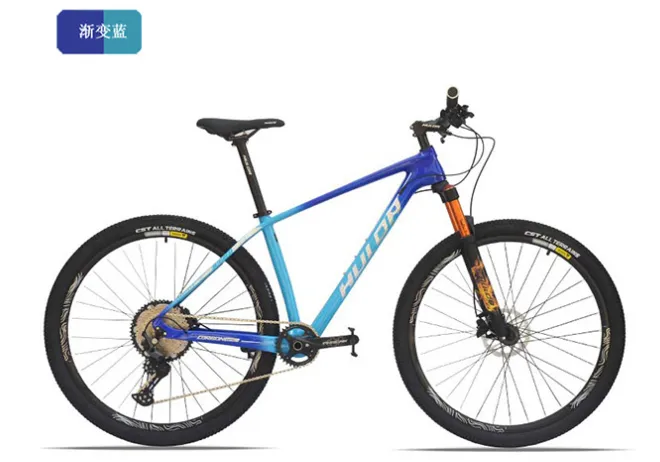Feb . 19, 2025 10:10 Back to list
27.5/29 "Color-Changing Carbon Fiber Mountain Bike 12 Variable Speed Mountain Bike Dirt Bike


Through years of competitive and recreational mountain biking, it becomes clear that technological advancements in derailleurs contribute significantly to performance. Electronic derailleurs, for instance, replace cables with motors, allowing for hyper-precise gear changes at the touch of a button. This technology reduces manual effort and increases shift reliability, even under heavy load conditions or bad weather, revolutionizing the responsiveness of gears. Manufacturers such as Shimano, SRAM, and Campagnolo lead the industry with innovations that reflect both technical prowess and a deep understanding of rider needs. Shimano's Di2 electronic systems, SRAM's Eagle technology offering expanded gear ranges, and Campagnolo's Ekar leading with gravel-specific systems showcase the pinnacle of engineering excellence in derailleurs. Testing these derailleurs in competitive markets further solidifies their reputations. Professional riders and teams put these components through extreme trials, their feedback instrumental in iterative design improvements. This cyclical process ensures that the derailleurs available to the average consumer are refined iterations capable of tackling any challenge. Long-term performance and maintenance stem from proper care—riders should regularly inspect their derailleurs for signs of wear or misalignment. Regular cleaning and timely adjustments extend the life of the derailleurs, ensuring peak performance across countless miles. Real-world usage provides ample insight into this, underscoring that trustworthiness in components not only enhances the immediate biking experience but also safeguards the longevity of the bike itself. In summary, mountain bike derailleurs are far more than mechanical components; they are a testament to engineering mastery and dedication. The interplay of expertise, real-world testing, and user trust composes the narrative of these crucial biking elements. By understanding their intricate workings, riders unlock the potential to elevate their mountain biking adventures, ensuring both reliability and thrill.
-
In-Depth Guide to Ebike Frames: Design, Use & Future Trends
NewsNov.25,2025
-
Discover Top E Bike Brand Insights, Specs & Future Trends | Yanline Bike
NewsNov.24,2025
-
Green E Bike – The Future of Sustainable Urban Mobility
NewsNov.24,2025
-
Ruffian eBike: Durable, Efficient Electric Bikes for Modern Mobility
NewsNov.23,2025
-
Comprehensive Guide to the Global E Bike Market and Future Trends
NewsNov.23,2025
-
Understanding Electric Bicycle Range: A Complete Guide for Smarter E-Bike Use
NewsNov.22,2025
-
Ceron Electric Bike – Efficient, Sustainable Urban Mobility Solutions
NewsNov.22,2025




